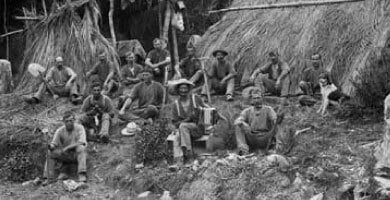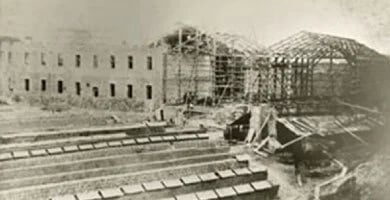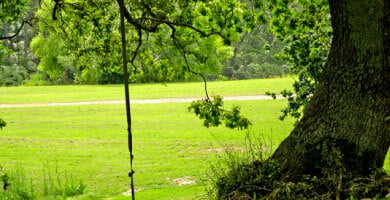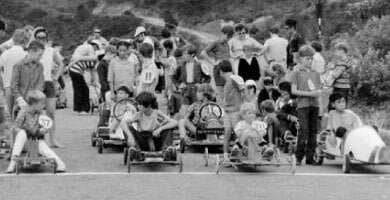Our History
One of NZ's favourite brands since 1884
Our History
Chelsea Bay Visitor Centre Opens

2018
Chelsea Bay, an exciting new visitor experience centre at NZ Sugar opened in late October 2018. The new facility in Birkenhead, includes a café, factory tours, a state of the art baking school, and an interactive education zone.
The Heritage Park opened
Heritage Park Trust buys 37 hectares

2008
37 hectares of land, including the lakes, regenerating forest, wetlands and open spaces were sold to the Heritage Park Trust. Because it is now owned by the Heritage Park Trust, it won’t ever by subdivided or cleared to make way for buildings or houses. This means Chelsea was able to help keep the park safe for future generations to enjoy.
Chelsea wharf upgraded
Chelsea turns 100!
Deregulation

1980s
New Zealand became the second country in the world to deregulate their sugar market, which loosened many rules about who could sell sugar and how much for. Before this, Chelsea had to sell their sugar for a fixed price, but were the only company in the country who could sell it. Deregulation meant Chelsea had more freedom, but also more competition.
Chelsea wins garden prize
Downhill Derby goes off
The bridge brings the city closer
Chelsea sells Lighters
First supermarkets in NZ

1959
The late 50s saw the arrival of the first supermarkets in New Zealand. Before this people would shop at small, local shops. Supermarkets meant Chelsea could get their products out to people more quickly and cost effectively. The opening of the Auckland Harbour Bridge also made things a lot simpler for Chelsea. Before the bridge was built, 90% of Chelsea’s sugar had to be shipped across the harbour on flat-bottomed boats called Lighters. Special consideration was taken when the bridge was designed, so that Chelsea’s ships could fit underneath it.
Chelsea during the war

1939 - 1945
Like most other New Zealand businesses during this time, Chelsea only employed men. During World War II, most young men were sent to fight, so for the first time, businesses had to employ women to keep things running. Chelsea was no different – women worked in the office and the golden syrup packing house. A special defence block was also set up at the Chelsea Factory to help with the war effort.
Chelsea weathers The Great Depression

1930
In the 1930s, most New Zealand business were hit by The Great Depression. Business shut down or reduced their production to cut costs, which left many out of work. People were often asked to work only part time to share the work and the wages. Fortunately, Chelsea was a well-established business and made a product that people still wanted and needed. It meant we were able to get through the hard times and keep our workers in paid employment.
Fourth dam constructed

1920
In 1920, a fourth dam was constructed. All four dams were built to create a man-made stream from the water in Duck Creek. These are still used to this day. The water is treated at our treatment station, which we call Candy Filter Station, to make sure that it is safe to use. It’s then boiled with natural gas to make steam. The refinery uses about 650m3 of water everyday, most of which is taken from the third dam.
Locals dig Kauri gum

1910
Before it was cleared to make way for the factory, the Chelsea Estate was home to many Kauri trees. These left big deposits of Kauri gum underground. Kauri gum was used for things like varnish and linoleum and was quite valuable. Locals would cut spears from the trees on the Chelsea Estate and dig for gum to sell to a dealer in Fort Street in Auckland. Gumdigging was hard work, but worth the effort – a sugar bag full of Kauri gum was worth about £3, which was a week’s wages for some people.
Workers get more new cottages

1908
More houses were built on site, including the original manager’s homestead. This was a large brick house, at the top of the hill above the Factory raw store. In 1909, four brick cottages were built for the workers who needed to be close by in case of emergency. You can still see these five houses on the left side of Colonial Road inside the Chelsea Estate. Of the original houses built by Chelsea, these are the only ones still standing.
Third dam built
Replanting begins

1900
With production ticking over, Chelsea began replanting the land around the factory. The estate was planted in native and exotic trees and shrubs to encourage people to visit, and local wildlife to make their home there. This programme of planting continued over the years, resulting in the lush, beautiful park you see today.
Passenger wharf built
Colonial Sugar Refinery (CSR)
1887
The collapse of the sugar market hit the refinery hard – after four years, they were still seeing no profit. So, shares were exchanged for shares in another company, Colonial Sugar Refinery (CSR). This created one amalgamated company that would share costs to produce and sell sugar more cost efficiently.
Chelsea village built
Raw sugar arrives, sugar price drops

1884
The next year, the first ships full of Indonesian raw sugar arrived, and the factory began processing and packing. But they were in for a shock. Not long after, the world sugar market collapsed – over supply meant the factory would have to sell their sugar for much less than they had first thought.
The Chelsea Sugar Factory gets built

1883
The Chelsea Sugar Factory took 18 months to complete and was built using one million hand-made bricks. These were made out of the clay, which had been excavated from the site. Another half a million bricks were made to build two dams across Duck Creek (dams 1 & 2). The upper dam was eight metres deep and held nearly four million litres of water. The lower dam covered nearly a hectare and had a brick batter and a roadway up the side. There were also two wharves, which were 64 metres long. Once opened, the factory was given the name, Chelsea, after the London hometown of the first customs officer.
First settlement of Chelsea

1882
When New Zealand was first being settled, the government offered money to set up the country’s first sugar factory. Before this, NZ had been importing sugar from Australia.
The Colonial Sugar Refining Company of Australia took up the challenge, and partnered with the Victorian Sugar Company to form the New Zealand Sugar Company. A number of New Zealand businessmen were involved too, including Horton, L D Nathan, W S Wilson and Sir Frederick Whitaker. The partnership lasted until the 1888 depression, when it was absorbed by the Colonial Refining Company.
The factory still stands on its original site in Birkenhead, on the North Shore of Auckland City. Ideally situated, the site was over 82 hectares of flat land, used fresh water from Duck Creek and had deep water in the Waitemata Harbour which enabled boats right to the factory door. Building materials, like timber from the trees and clay to make bricks, were also available on site, all within 9 kilometres of Auckland city. It was the perfect spot for a sugar factory.









